Platy or mirrorfish im Characteristics presented: beginners love next to that guppy also the platy. In almost every pool from approx. 60 liters it comes platy before. He is not only considered excellent beginner fish, but is also in almost all cast suggestions with you. That's why we want to take a closer look at the Platy and publish information about the distribution area, breeding, keeping conditions in the aquarium and feeding here. Next to the Gourami and also the catfish, the platy is also occupied again and again. Why this is so is answered below.
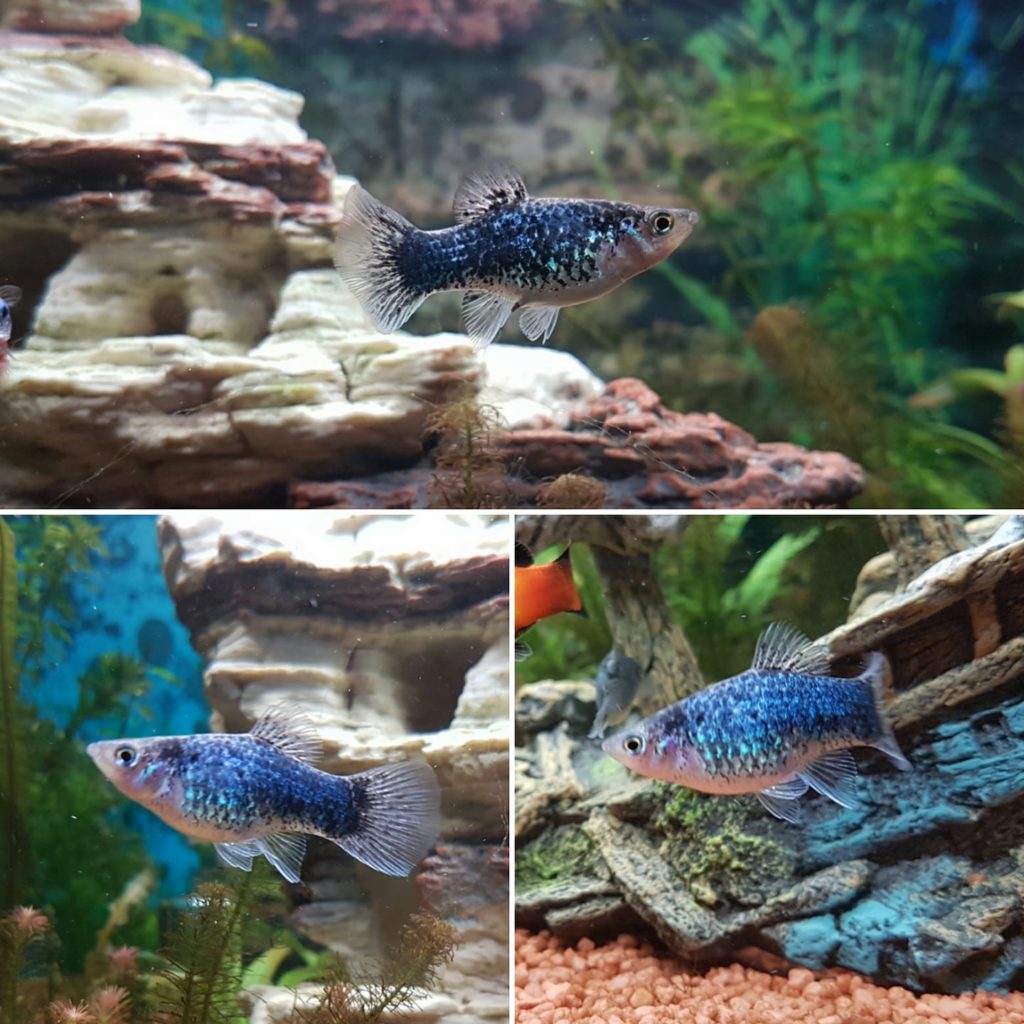
Where does the platy come from and what is its distribution area?
First a word about the genus and group of platys, because they also belong to the viviparous family toothcarp which already says a lot about reproduction and breeding. But we will talk more about breeding in a later chapter. Mostly the platy is only spoken with this name, but you can also call him mirrorfish. His name is Latin Xiphophorus maculatus which means spotted.
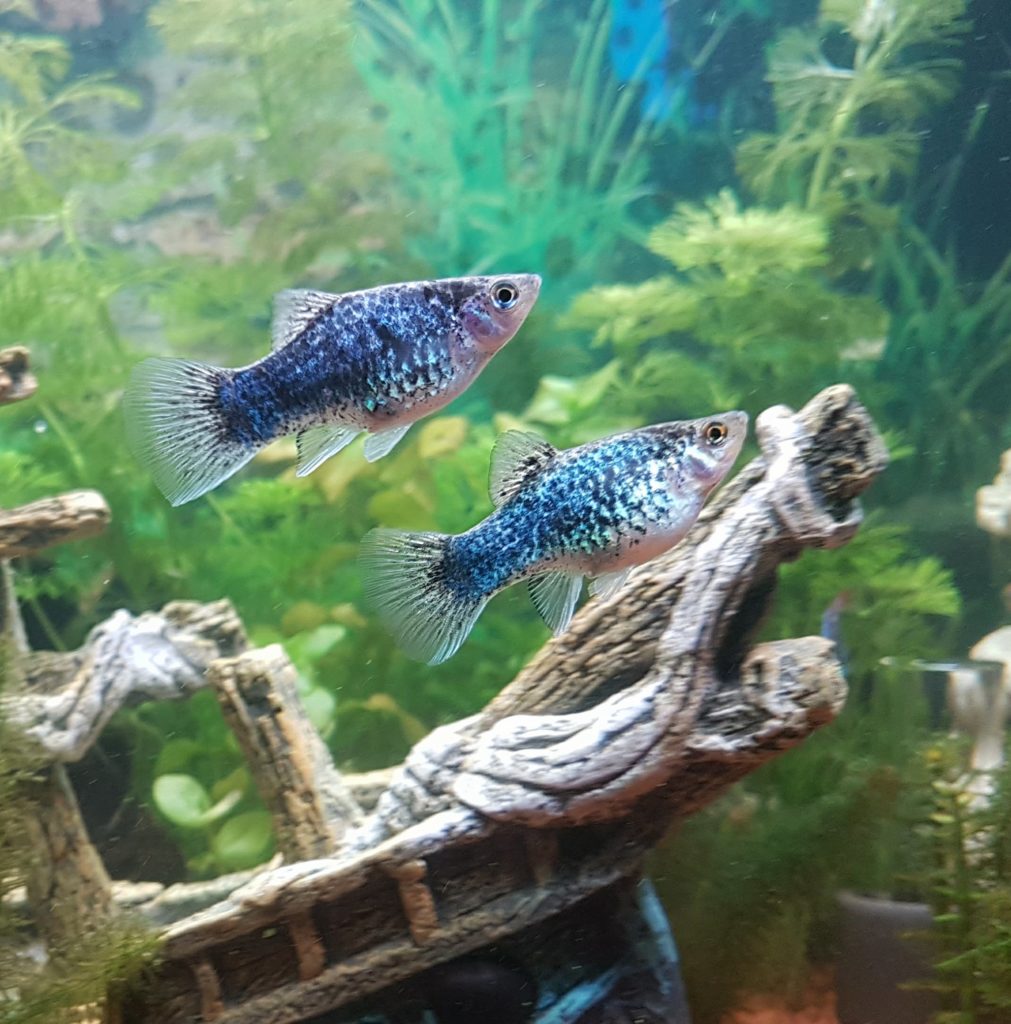
To the localities of the skin Wild Platy's apply primarily to water bodies in eastern Mexico. Honduras is also one of them. In contrast to the gouramis (Asia), one could roughly put the distribution area here with Central America. There it lives in rivers such as the Rio Papaloapan or the Rio Coatzacoalcos. Of course, you can also find it in numerous tributaries. Anyone who undertakes a trip to these areas will quickly come across the wild-caught platys, also known as Xiphophorus maculatus in Latin. However, platies do not love the fast-flowing streams or rivers, but are more likely to be found in ponds and swamps. The small colorful fish feel particularly at home there. You should also make sure in the aquarium that you offer zones that do not cause too much current. But more on that later when it comes to the water values goes more.
Platy Appearance
If you look at the dealers and pet shops today, you quickly realize that there are countless of cultivated forms for Platy's gives. wild caught and there are only a few original wild platys left. crossing between the parrot platys and sword bearers are on the agenda. So you can also see platy with different colors and shades and also with different tails (brush tail platy), which mostly differ completely from the standard form. In their basic form, Platys have a very straight caudal fin and the body is also usually very straight. You could also describe him as high-backed.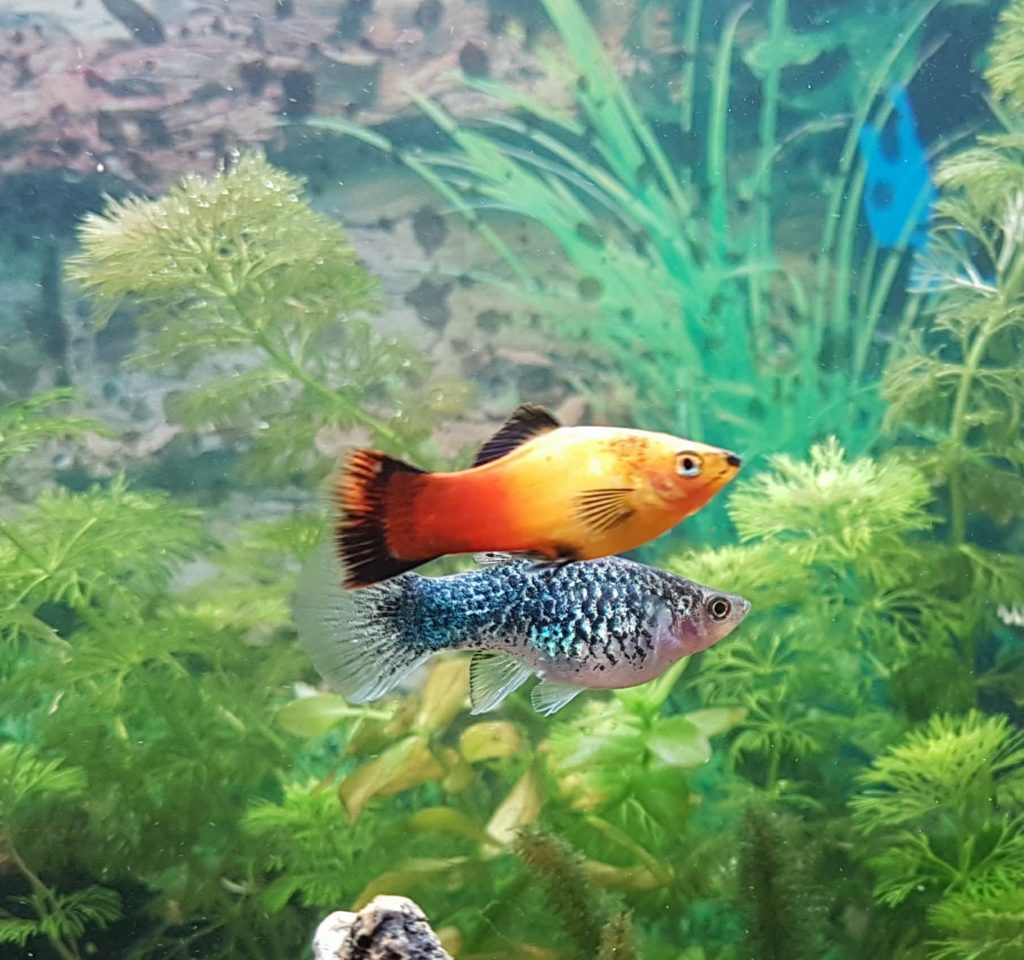
As far as color is concerned, it usually occurs in nature in a yellowish grey, but it also occurs in nature in red or orange. Today one can speak of trunks which are monochromatic, mostly yellow or red (Alpino Platys already exist) or one goes into the group of two-colored Platys. There are specimens that have a different colored tail fin, for example, or a different body colour. There are also many species and genera or cultivated forms that have a spotted pattern. These are usually also called Tuxedo Platy. The imagination seems to have no limits. We have a nice one here too Video found, which shows what is possible in terms of shapes and colors:
Nevertheless, we are a fan of single-colored, very beautifully glowing platys. These are usually none breeding forms. The age of these fish is usually longer than that of the high-breed Platys. On the many pictures here you can clearly see which fish are cared for in this way.
The distinction between females and males is very easy. For one, the male possesses that gonopodium, which is used for fertilization, on the other hand, the males are usually smaller and also a little more colorful than the females. The male can grow between 2 and 4 cm and the female between 3 – 5 cm. Therefore, Platys can also be kept in smaller tanks.
Keeping and water parameters of the platies
As always, the most important thing before you buy an ornamental fish is to know exactly what it is for Conditions needed. That's the only way you can ornamental fish also keep it species-appropriate. Unfortunately, one often sees that fishing either occurs with unsuitable water values or with an unsuitable one aquarium size being held. In addition, it also happens that there are errors in the socialization gives. So that this does not happen with the platys, we put together the most important things.
It is not for nothing that the platy is also considered a beginner's fish because it can be kept in water that in most households already comes from the water pipe. Be it in terms of hardness or in terms of PH value. If this is between 7 and 8, then you are in the optimal range. In addition, the platy tolerates a total hardness of up to 20 degrees without any problems.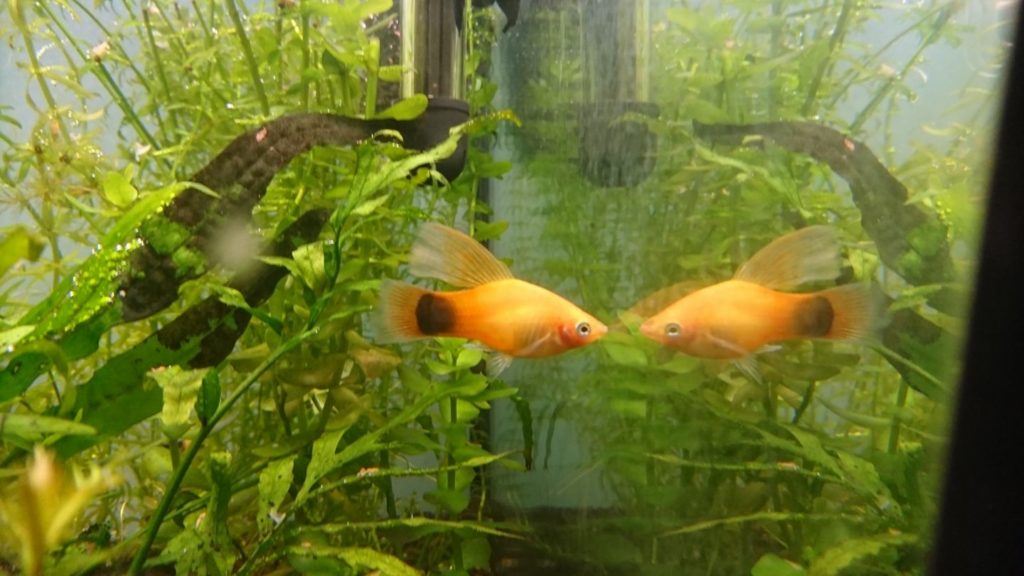
As for the temperature, he doesn't like too warm water. Here you should go up to a maximum of 27 degrees. A temperature of around 20 – 25 degrees is even better. This should be considered when socializing with other fish.
If you want to keep platys, you don't have to buy individual fish, but one Group to put. Because of male dominance, there should always be an overhang of females. We recommend a ratio of 2:3 here. You should also make sure that you don't just keep two males, because there could quickly be territory and dominance fights between these two. Therefore it is better to keep 3 males and 5 females. A group of 8 should also be possible.
Let's talk about the aquarium size. Among other things, the stocking density must be observed here. We have already put together everything you need to know in our guide:
Our recommendation what the size of the aquarium concerned is around 80 cm. With a 60 cm (54 and 60 liter tank) the space is not optimal, although here the aquarists often argue. If you don't keep any other fish, then it could also work with 60 cm. Better, however, from 80 cm and here not only the size of the fish alone is decisive.
You should also pay attention to the nature of the platy. They are very good swimmers and need an appropriate one free space in the pool. In addition, you should also offer them places to retreat and floating plants, because these are also needed for breeding if you want to bring the young through. Let's summarize again briefly:
- Always keep Platy in groups
- More females than males
- Temperature of 20 – 27 degrees
- Water hardness up to 20 degrees
- Ph value of 7 – 8
- Aquarium size of 80 cm recommended
Feed and eat the platies
mosquito larvae of all kinds, flake food, green fodder, frozen food and also live food are on the menu for the platys. They are true omnivores, which makes it easy to keep the fish in the aquarium. Nevertheless, you should ensure a lot of variety. Artemia, Cyclops or other microorganisms are also readily taken by the fish. Platys also like to eat plant matter such as aquatic plants and algae.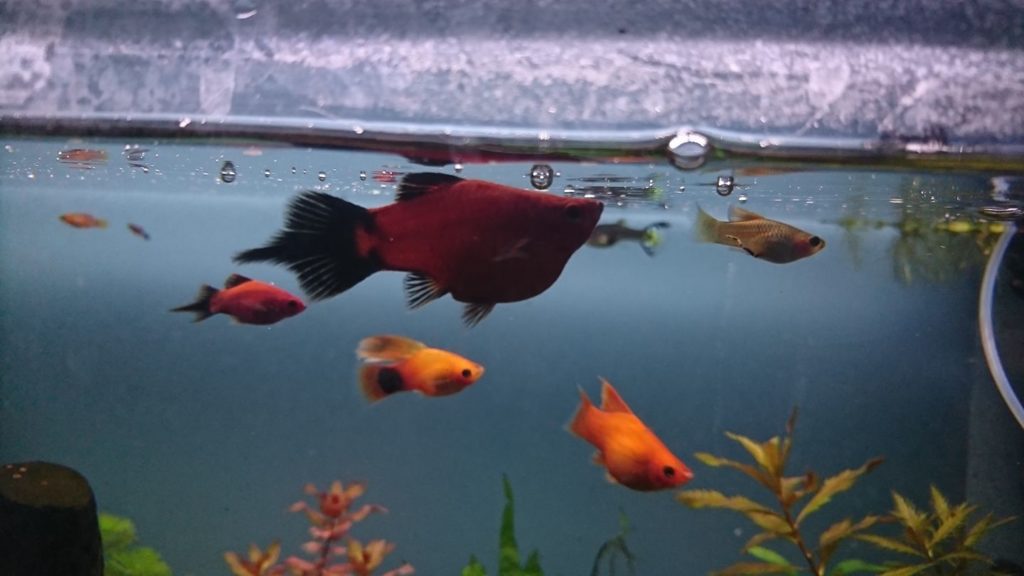
Again and again the platy is also considered a good one algae eater mentioned and one can only agree. However, even he will not be able to perform miracles. Whether it concerns an aquarium that may be too heavily infested with algae or certain types of algae. Not all algae are liked by the platy. Therefore, it must first be determined exactly what type of algae it is.
breeding of platies
The sigh for Platy's can be regarded as quite easy, because oh like the guppy, the platys are extremely willing to reproduce. Maybe not quite as much as the guppies, but still one should proliferation do not pose a problem in the species tank. In a community tank, however, this can become a bit more difficult, because the newly born young fish are often viewed and eaten by other fish as live food. If you want to breed platys in a community aquarium, you should ensure good planting and a closed plant cover in some areas.
It is also important that only species-specific fish are mated with each other when breeding, because otherwise new animals can quickly appear, which have very unsightly discolorations.
The platys also give birth to their young alive and there can be up to 80 young in a litter. Fertilization is the same as in guppies. The male fertilizes the female with the help of his gonopodium. The females can also "store" the male's sperm and thus carry out another fertilization without the male even months after the litter. You should know this because it happens again and again that females have young without there being a male at the moment. You can also see quite well whether the females are pregnant, because a pronounced belly and pregnancy spot indicate this. This continues to develop towards the end of pregnancy. The eggs are hatched inside the female. After about 24 days, the young are born alive and immediately begin to swim and eat themselves. There is no yolk sac like the spawners have. Here you should then switch to micro lining and dust lining or give this as an additive.
We also found a great video about the birth of the animals, which of course we don't want to withhold from you:
Thanks for the many great pictures of the Facebook group https://www.facebook.com/groups/Aquaristik/permalink/1716038841766750/



